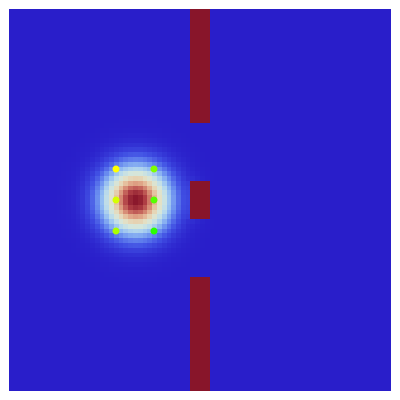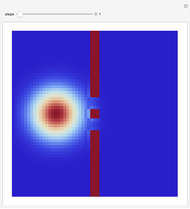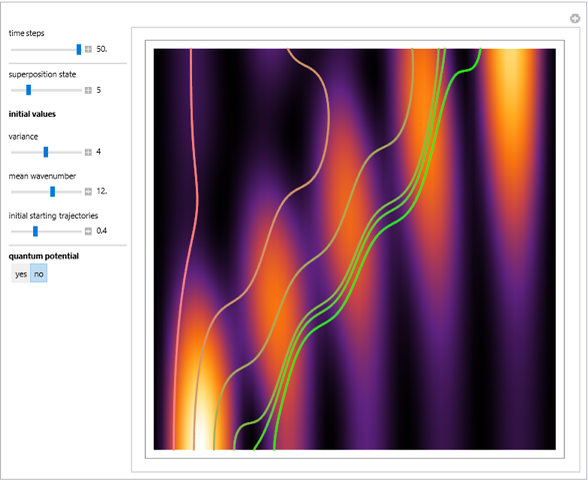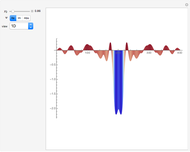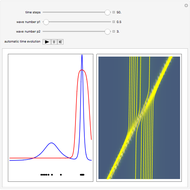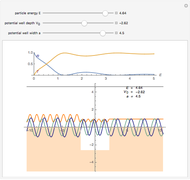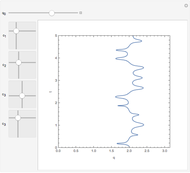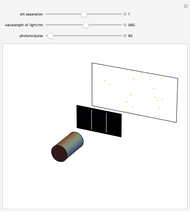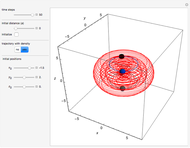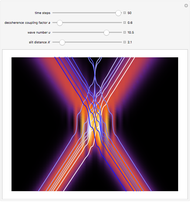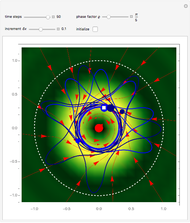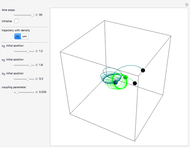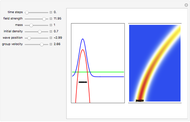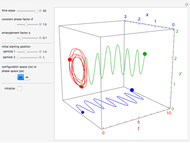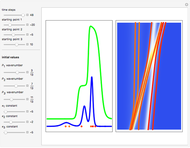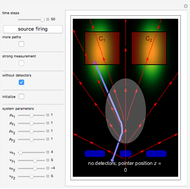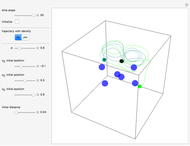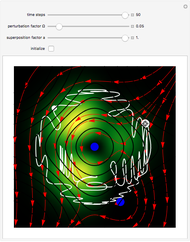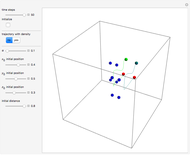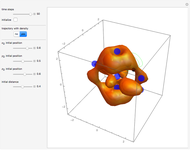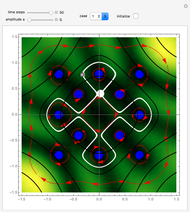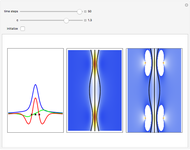Causal Interpretation for an Electron Passing through Two Narrow Slits

Requires a Wolfram Notebook System
Interact on desktop, mobile and cloud with the free Wolfram Player or other Wolfram Language products.
This Demonstration covers the same process described inProbability Density for an Electron Passing through Two Narrow Slits, but with an extension to the causal interpretation of quantum theory developed by L. de Broglie and D. Bohm. With the numerical technique, you can see fine details of the scattering process both near and far from the narrow slits.
Contributed by: Klaus von Bloh (August 2012)
Based on a program by: Enrique Zeleny and Paul Nylander
Open content licensed under CC BY-NC-SA
Snapshots
Details
For more information see [1], [2], and [3]. The numerical method to calculate the velocity from a discrete function is, in general, not very stable, but the applied interpolation function leads to an accurate approximation of the physical event; due to the numerical errors produced by the limited mesh of 80 mesh points, the velocity term must be adjusted (here using 5/8 instead of 1).
References
[1] S. Goldstein. "Bohmian Mechanics." The Stanford Encyclopedia of Philosophy. (Aug 6, 2012) plato.stanford.edu/entries/qm-bohm.
[2] Wikipedia. "Crank–Nicolson Method." (Aug 6, 2012) en.wikipedia.org/wiki/Crank-Nicolson_method.
[3] I. Galbraith, Y. S. Ching, and E. Abraham, "Two-Dimensional Time-Dependent Quantum-Mechanical Scattering Event," American Journal of Physics, 52(1), 1984 pp. 60–68. doi: 10.1119/1.13811.
